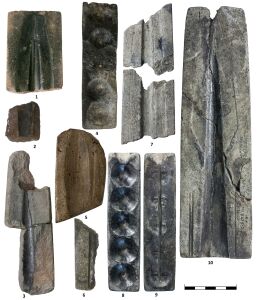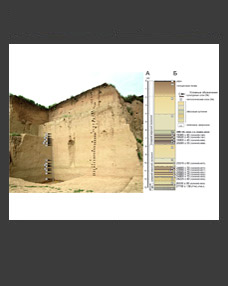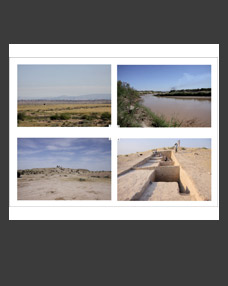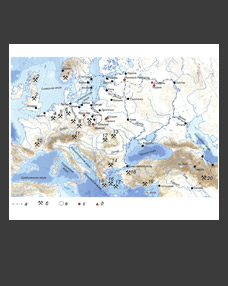 Irina S. Zhushchikhovskaya1,*, Igor Yu. Buravlev2,**, Nikolay A. Kluyev1,***, and Tatiana A. Emelianova3,****
Irina S. Zhushchikhovskaya1,*, Igor Yu. Buravlev2,**, Nikolay A. Kluyev1,***, and Tatiana A. Emelianova3,****
1Institute of History, Archaeology and Ethnology of Peoples of Far East, FEB RAS, Vladivostok, Russia
2Far Eastern Federal University, Vladivostok, Russia
3Pacific Oceanological Institute, Vladivostok, Russia
*E-mail: irina1zh@mail.ru
**E-mail: buravlev_igor@mail.ru
***E-mail: kluyev2006@yandex.ru
**** E-mail: emelyanova@poi.dvo.ru
Keywords: Primorye, casting molds, heat residue, natural sciences methods, tin-lead bronze alloys, bronze casting technology.
The paper presents research on heat residue in stone casting molds unearthed at the multilayered settlement Siniye Skaly in Eastern Primorye region. The study is aimed at the detection and interpretation of the features determined by metal-casting technology. Optical microscopy, scanning electron microscopy, energy-dispersive X-ray spectrometry and X-ray fluorescence portable spectrometry were applied to the investigation of considered stone molds for the first time. The surface texture and elemental com position of heat residues were investigated. As a result, traces of Cu-Sn-Pb alloys were detected as well as certain evidence of special surface covering, presumably of animal origin, improving casting quality. The data obtained make it possible to clarify the significance and place of the stone casting molds from Siniye Skaly in the context of ancient metalworking in the south of the Russian Far East.
DOI: 10.31857/S0869606325020046, EDN: IPYRCT







